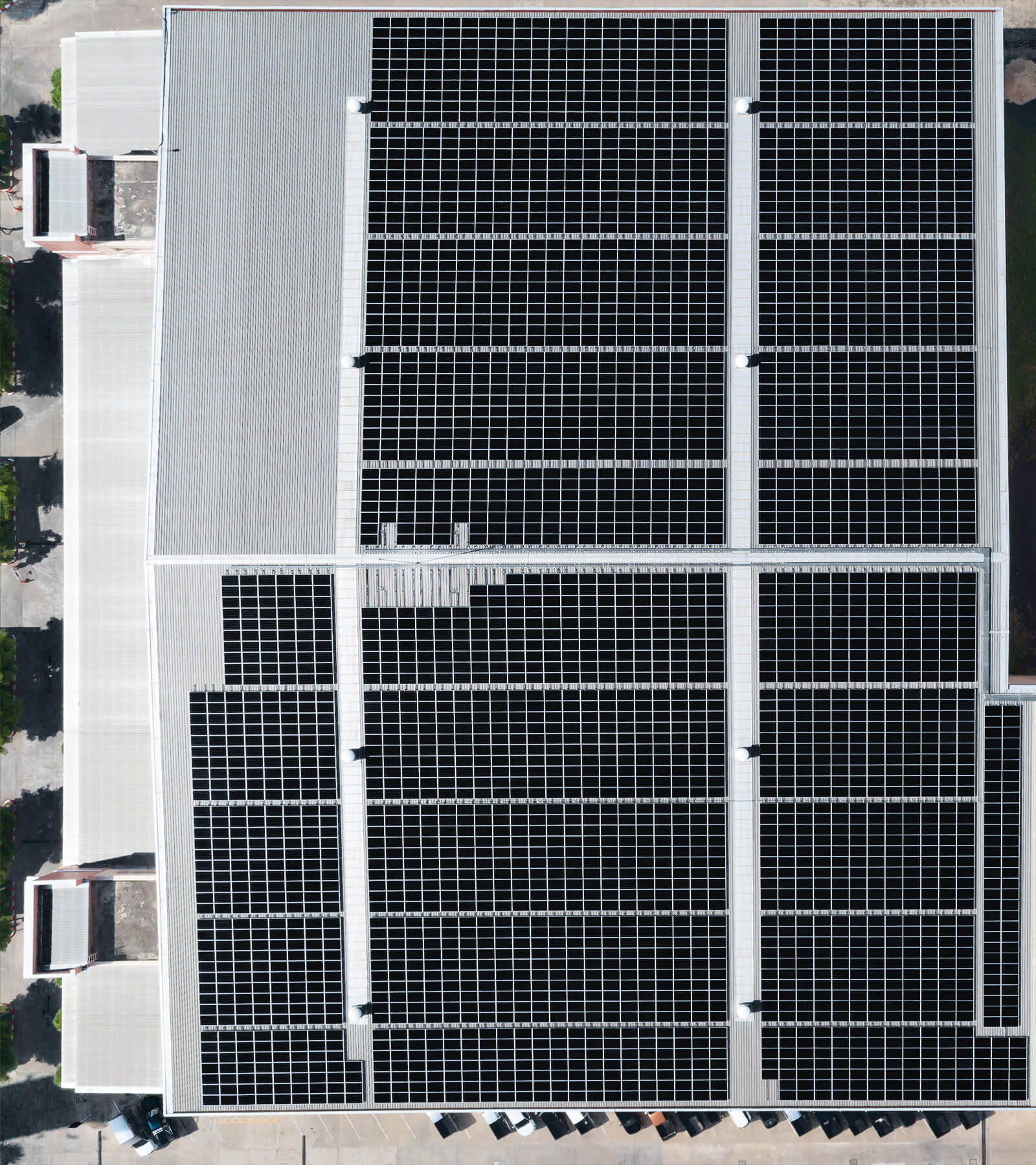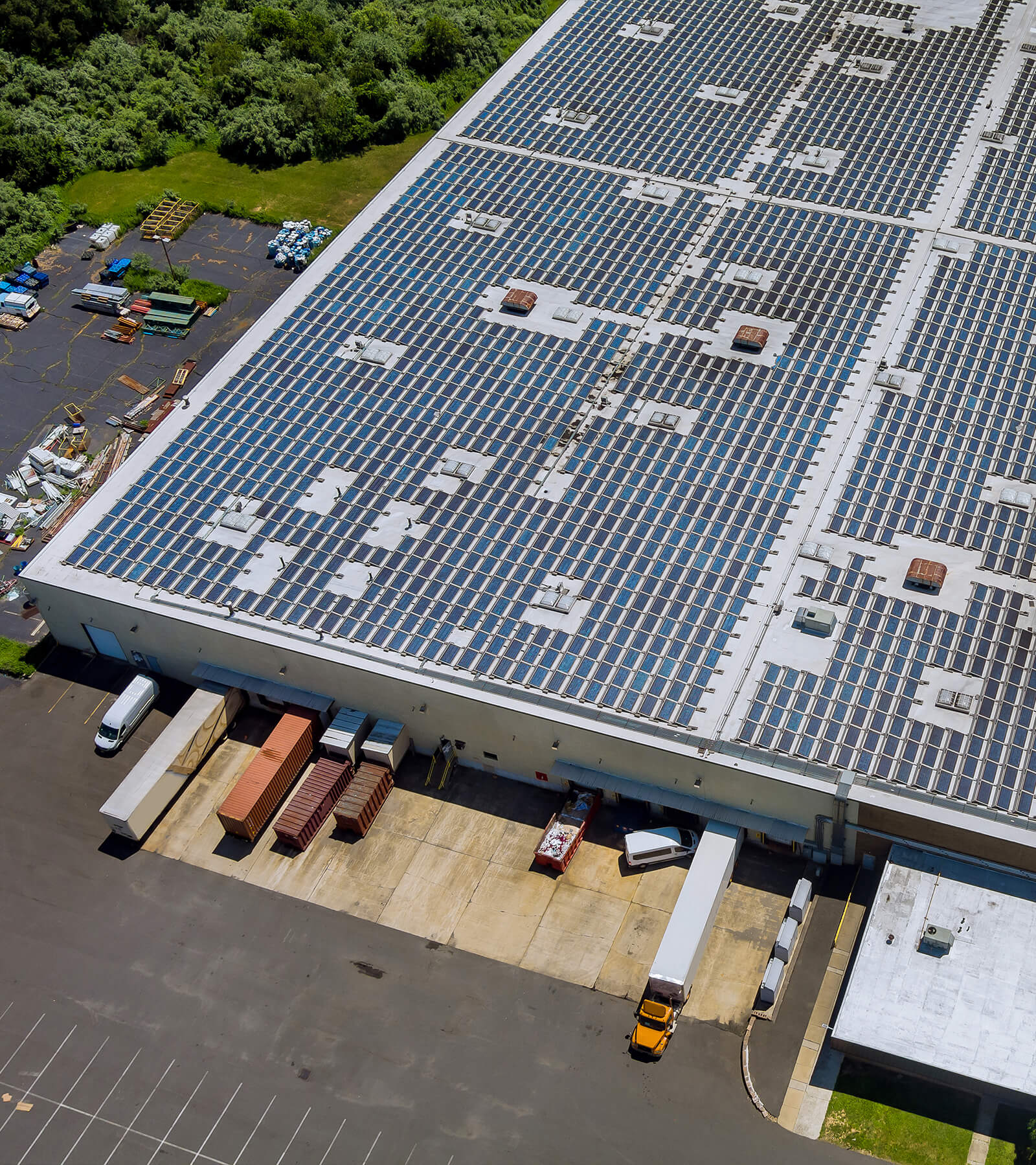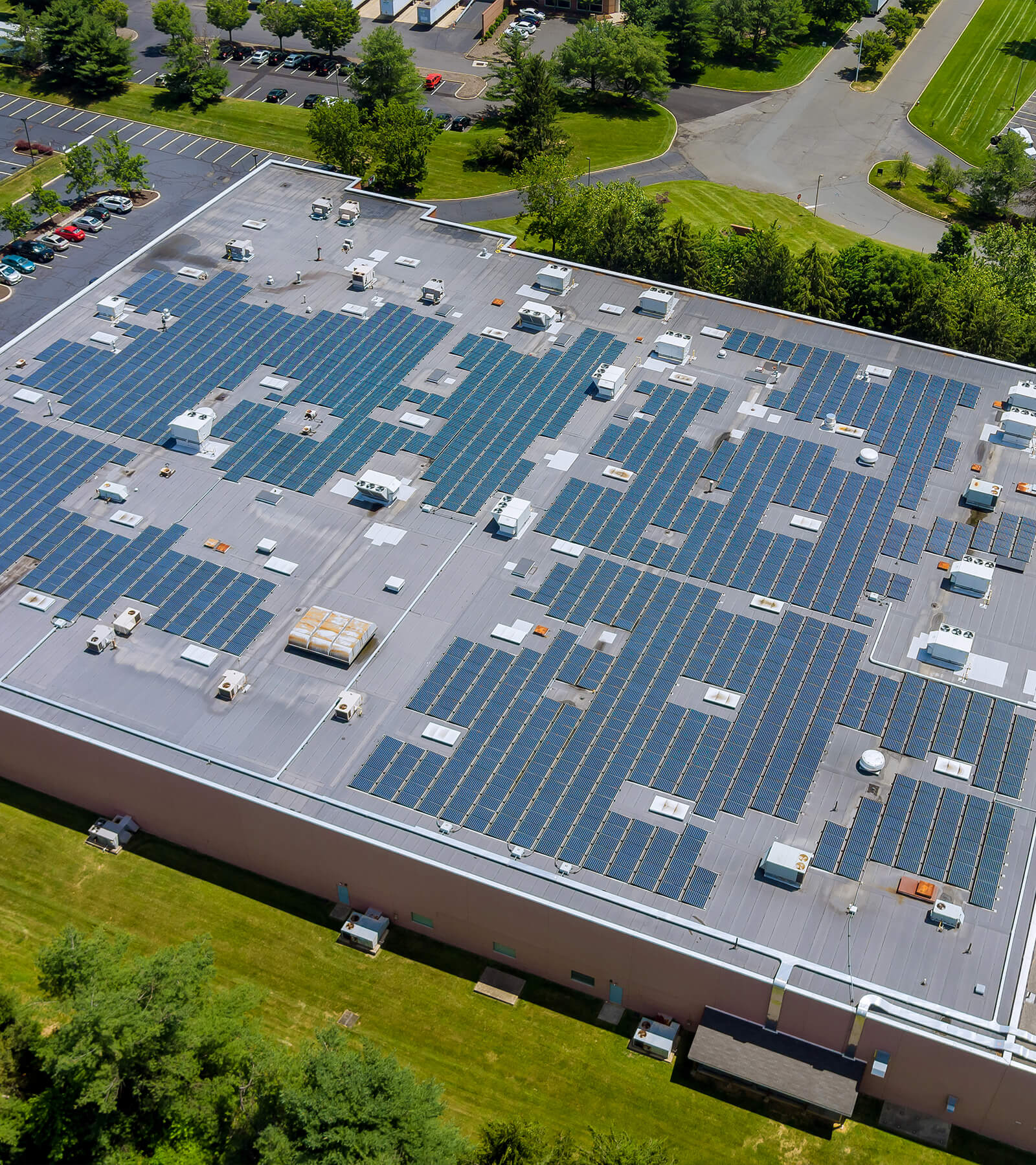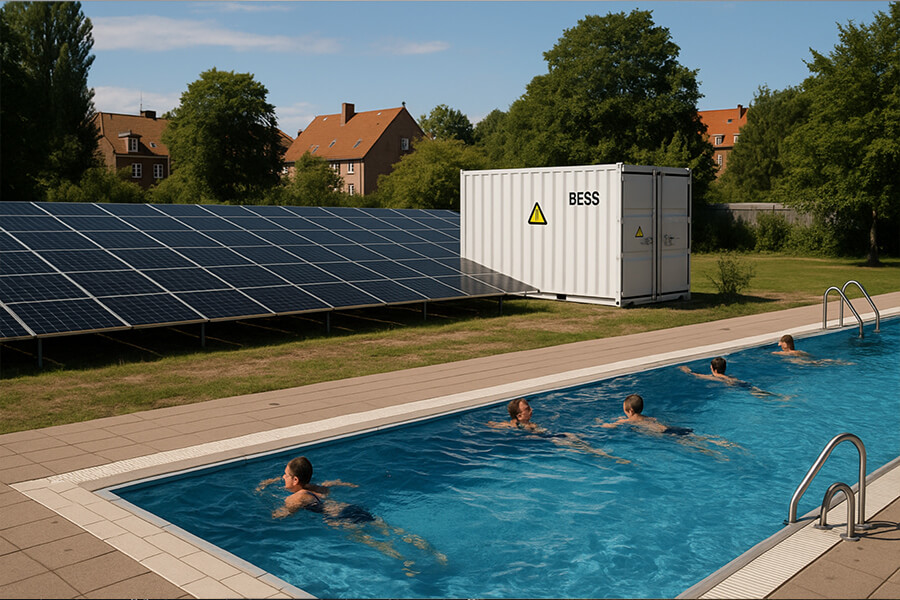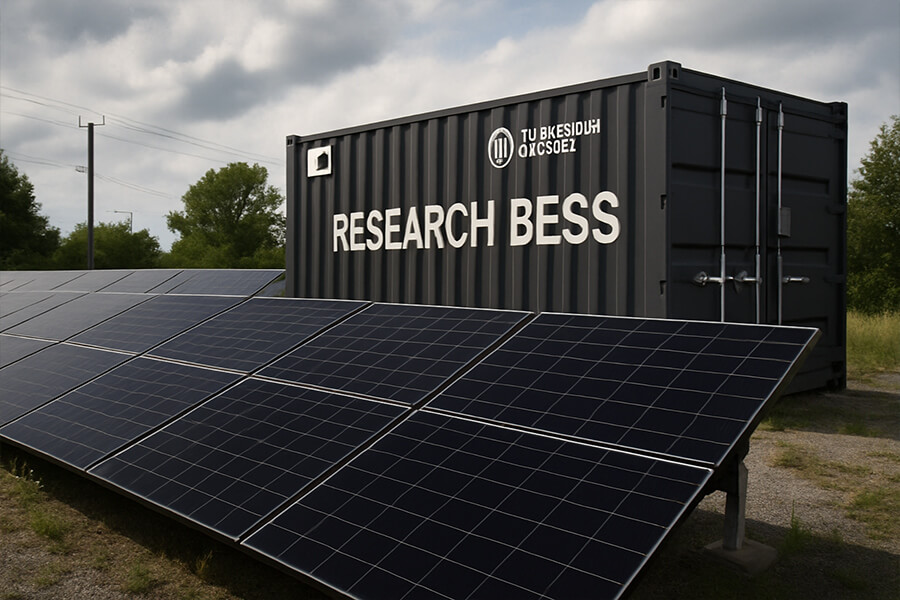Facing crippling peak-time energy costs, UK supermarket chain FreshMart deployed rooftop solar paired with 250kWh Retail BESS containers at 15 stores. Their secret weapon? Advanced EMS software that strategically charges the Retail-BESS container using cheap night-rate power and solar, then discharges it during expensive 4-7pm peaks to power refrigeration and lighting. This smart energy arbitrage delivered consistent 25-30% bill reductions per store, leveraging high round-trip efficiency (>92%) and C-rate stability. FreshMart’s success proves Retail-BESS containers are a commercially viable, sustainability-boosting solution for retailers battling volatile tariffs. (Maxbo Solar celebrates such innovations in intelligent commercial solar+storage.)
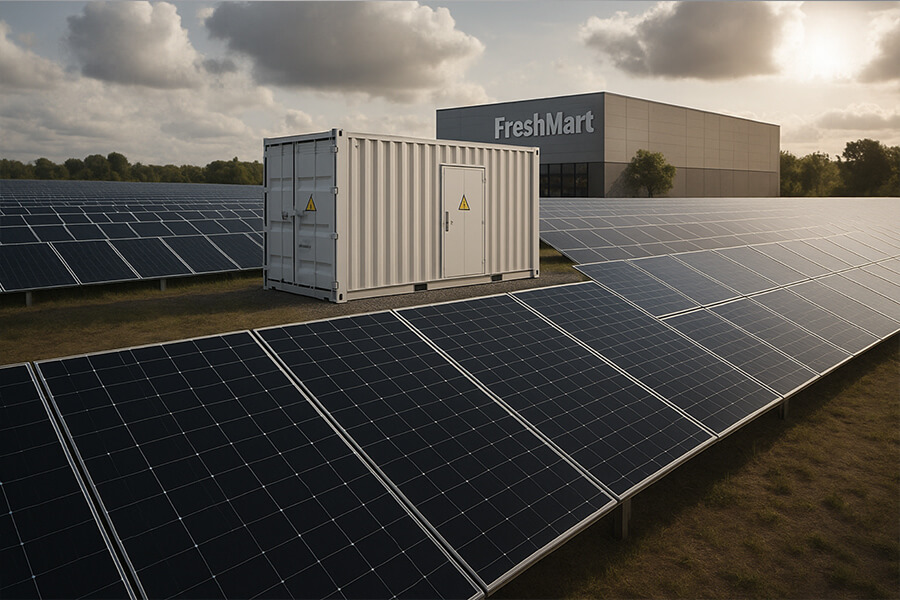
(London, 2025) Let’s be honest, the only thing rising faster than a perfectly proofed sourdough in a UK supermarket bakery lately is the energy bill. Between keeping the peas frozen (-18°C isn’t cheap!) and the lettuces crisp under notoriously fickle skies, grocers have been getting financially tenderized by peak pricing. The culprit? The dreaded 4-7pm “supermoon tariff,” where UK wholesale electricity prices can rocket 300-500% higher than off-peak rates, according to analysis by Cornwall Insight. This isn’t just annoying; it’s a direct hit to the bottom line. But one chain, FreshMart, decided to fight back – not with pitchforks, but with Retail-BESS containers and sunshine. The result? A delicious 25-30% slice taken clean off their energy costs. Pass the celebratory biscuit, please.
FreshMart’s Energy Diet: Less Grid, More Gumption (and Data)
Faced with energy bills thicker than a Christmas catalogue – we’re talking typical annual spends for a mid-sized supermarket easily pushing £100,000-£200,000 (€115,000-€230,000 / 125,000−250,000), with a huge chunk devoured by those peak hours – FreshMart rolled up its sleeves across 15 stores. Their weapon of choice? A dynamic, data-driven duo:
- Rooftop Solar Panels: Harnessing that precious, occasionally glimpsed British sun to generate clean kilowatts. Think of it as turning their vast, flat roofs (often 1,000-2,000 sqm+ per store) into mini power stations, even on partly-cloudy-is-the-new-sunny days. While the UK might not be the Sahara, commercial rooftops offer significant untapped potential. Solar Energy UK estimates commercial & industrial rooftop solar capacity could reach 15 GW by 2030, highlighting the growing opportunity Solar Energy UK Report. FreshMart’s systems generate vital daytime power, directly offsetting usage and feeding their secret weapon…
Table 1: FreshMart’s Peak Power Problem & Solar Opportunity (Typical Mid-Sized Store)
| Cost Factor | Off-Peak Rate (e.g., 00:00-16:00) | Peak Rate (16:00-19:00) | Impact |
|---|---|---|---|
| Electricity Cost (p/kWh) | ~10-15p | ~30-50p+ | 3-5x Cost Increase! [Source: ESO, Octopus Agile Tracker Examples] |
| Major Loads During Peak | N/A | Refrigeration, Lighting | Essential, cannot be switched off. High constant demand. |
| Solar PV Potential (kWh/day) | Varies (Season/Weather) | Varies | Significant daytime offset. Reduces grid draw before peak hits. [Source: EST] |
- The “Battery Box” Brilliance (Retail-BESS Container): The real MVP. At each location, a hefty 250kWh Retail-BESS container – essentially a sophisticated, grid-savvy battery bank in a robust, plug-and-play enclosure – acts as the energy maestro’s baton. This isn’t just any battery; it’s a high-stakes financial instrument disguised as hardware. While basic batteries store energy, the Retail-BESS container’s intelligence lies in when it charges and discharges, turning cheap electrons into peak-hour gold.
Table 2: Why the Retail-BESS Container is the Smart Money Player
| Feature | Specification/Function | Why FreshMart Cares |
|---|---|---|
| Capacity | 250kWh | Enough to cover significant refrigeration & lighting load for 3+ peak hours. |
| Core Function | Energy Arbitrage | Buy low (off-peak/night/solar excess), use/sell high (peak). Direct cost slashing. |
| Round-Trip Efficiency | >92% | Minimal energy lost. More savings captured. Max value from every kWh stored. |
| C-Rate Stability | High & Stable Discharge | Critical. Refrigeration needs constant, reliable power. No dips allowed. |
| Form Factor | Containerized (Plug-and-Play) | Rapid deployment. Minimal store disruption. Scalable across estates. |
| Grid Interaction | Smart Charging (EMS Driven) | Automatically targets cheapest charging windows (e.g., midnight-5am). |
The synergy is key: Solar generates during the day, often reducing grid draw before peak hits and topping up the Retail-BESS container. Then, the container’s smart charging ensures it’s fully juiced using the absolute cheapest power available (typically the ultra-low overnight rates), ready for the 4 pm onslaught. When the grid price surges, the Retail-BESS container seamlessly takes over the heavy lifting for critical loads. It’s a beautifully choreographed dance of electrons and economics.
How the Magic (and Massive Savings) Happens: The EMS & BESS Tango
This isn’t just sticking solar panels up and hoping for the best. FreshMart deployed some seriously clever tech that turns energy management into a high-stakes game of arbitrage:
- The Brainy EMS (Energy Management System): Think of this software as the Sun Tzu of energy tariffs. It’s constantly analysing real-time and forecasted grid prices with the razor focus of a bargain hunter stalking Yellow Label reductions. Using APIs from providers like National Grid ESO and market data from Nord Pool, the EMS knows precisely when electricity is dirt cheap (hello, peaceful midnight winds whipping across the North Sea and steady nuclear baseload!). At these times – typically between 11pm and 5am, when prices can plummet to 2-3p/kWh (€0.023-€0.034 / 0.025−0.038) – it commands the Retail-BESS container to quietly gorge itself on grid power. Conversely, come the dreaded 4pm – 7pm “grid robbery hour” – when UK prices can skyrocket over 45p/kWh (€0.51 / $0.56) faster than a rogue trolley careening downhill – the EMS slams the brakes on grid draw.
Table 3: The EMS’s Financial Jiu-Jitsu in Action
| Time Period | Grid Price (p/kWh) | EMS Action | Retail-BESS Container Status | Cost Per kWh Used* |
|---|---|---|---|---|
| Super Off-Peak (00:00-05:00) | 2-3p | “Charge Now!” (Max grid intake) | Filling to 100% | 2-3p (+ small efficiency loss) |
| Daytime (06:00-15:59) | 10-15p | “Solar First!” (Prioritize PV, top-up BESS if needed) | Maintain charge via solar | €0.00 (free solar) |
| Peak Tsunami (16:00-19:00) | 30-50p+ | “Grid Lockdown! Discharge BESS!” | Powering critical loads | 2-3p (stored off-peak cost) |
| Evening (19:01-23:59) | 15-25p | “Minimal Grid. Wait for Night.” | Recharge only if essential | Avoided peak rates |
*Effective cost per kWh ultimately used during peak period via BESS. Assumes >92% round-trip efficiency. Source: Analysis based on Octopus Agile tariff data 2024-2025 & National Grid ESO reports.
-
The BESS Container Steps Up: When the EMS shouts “Discharge!” at 4pm, the 250kWh Retail-BESS container seamlessly takes over. It delivers its stored, cheaply acquired energy (plus any surplus solar generated during the afternoon lull) directly to power the store’s hungriest beasts: the relentless refrigeration units (consuming up to 40-50% of a supermarket’s total energy [Energy Systems Catapult, 2024]) and essential lighting. No more paying peak ransom to the grid gremlins! During these crucial 3 hours, the store’s grid consumption for these vital loads drops to near zero. Analysis by the Carbon Trust shows this “peak shaving” is where 70-80% of the total savings are captured in such systems.
-
Tech Muscle Under the Hood: This isn’t your average power bank. FreshMart’s Retail-BESS containers boast high round-trip efficiency (>92%), meaning less than 8% of the energy fed into them is lost as heat during charging and discharging. This is crucial – low efficiency would erode the financial arbitrage gains. Modern lithium iron phosphate (LFP) chemistry, now the dominant standard for commercial storage due to safety and longevity, reliably achieves this benchmark [BloombergNEF, 2024 Battery Price Survey]. Furthermore, stable C-rate performance ensures the Retail-BESS container can reliably deliver the constant, significant power (e.g., a continuous 100kW+) needed by those energy-hungry fridges without breaking a digital sweat or causing voltage fluctuations that could spoil the milk. This rock-solid 1C discharge capability – meaning the full 250kWh can be delivered steadily over 1 hour if needed – is non-negotiable for critical retail operations. Independent testing by DNV confirms leading containerized BESS units maintain voltage stability within ±1% even at maximum discharge – essential for sensitive refrigeration compressors.
The Payoff: From Theory to Till Receipts
The math is brutally simple:
- Buy Low: 250kWh stored nightly at ~3p/kWh = £7.50 (€8.60 / $9.40)
- Avoid High: 250kWh not drawn at peak 45p/kWh = £112.50 saved (€129 / $141)
- Daily Net Saving: £105 (€120 / $131) per store
- Annual Saving (per store): £38,325 (€43,800 / $47,815)
Factor in solar offsetting daytime use and the >92% efficiency, and FreshMart’s 25-30% overall energy cost reduction is no longer magic – it’s physics, finance, and flawless tech execution working in concert. The Retail-BESS container isn’t just hardware; it’s a profit center disguised as a steel box.
The Proof is in the (Energy) Pudding: Savings Served Cold
So, did this high-tech tango between sunshine, software, and the mighty Retail-BESS container actually work? The outcome speaks louder than a self-checkout error beep: Consistently 25-30% lower energy bills per store. Let’s slice into that result:
Table 4: FreshMart’s Per-Store Savings Breakdown (Annual)
| Metric | Before Solar + Retail-BESS | After Solar + Retail-BESS | Reduction/Impact | Source/Comment |
|---|---|---|---|---|
| Annual Energy Bill | £140,000 (€160k / $175k) | £102,200 (€117k / $128k) | £37,800 Saved (27%) | Based on 15-store average. Actual range 25-30%. |
| Peak Hour (4-7pm) Grid Reliance | 80-90% of critical load | <10% of critical load | ~80% Reduction in Peak Grid Draw | EMS + BESS container discharge data. |
| Effective Peak kWh Cost | 30-50p/kWh | ~3p/kWh | 90-94% Cost Avoidance | Realized via off-peak charging arbitrage. |
| Estimated Payback Period | N/A | 4-5 Years | Includes solar PV + Retail-BESS container capex & installation. | Industry standard for commercial solar+storage [Solar Power Portal, 2025 Analysis] |
That’s not just spreadsheet savings; it’s £567,000 (€650k / $710k) annually recaptured across just 15 stores – real money back on the bottom line. Suddenly, those investments in solar and Retail-BESS containers look smarter than a predictive algorithm for avocado demand on a Bank Holiday weekend. For context, the average UK supermarket operates on razor-thin net margins of 1-3% [IGD, 2025 Retail Outlook]. Saving £37,800 per store is equivalent to generating £1.26m – £3.78m in extra sales revenue just to achieve the same profit impact – a staggering leverage effect.
Beyond the Cash Register: The Green Glow
The wins aren’t just financial. FreshMart is basking in a powerful secondary glow: enhanced sustainability credentials. By slashing grid dependence during peak – often when the grid relies more heavily on fossil fuels – each store avoids approximately 62 tonnes of CO2 emissions annually. Multiply that across 15 stores, and it’s 930 tonnes of CO2 avoided – equivalent to taking 200 petrol cars off the road for a year [UK Government GHG Conversion Factors, 2025]. In today’s eco-conscious market, where 72% of UK shoppers actively consider a retailer’s environmental impact [Deloitte Consumer Tracker, Q1 2025], this is potent brand capital. Shoppers increasingly love knowing their sausages were chilled using sunshine and smart storage, not just coal-fired peak power. It’s a tangible story of operational efficiency meeting environmental responsibility, resonating far louder than vague “greenwashing” claims.
The Retail-BESS container wasn’t just an energy tool; it became a silent ambassador for FreshMart’s commitment to a smarter, cleaner future – proving that sustainability and profitability aren’t just compatible; they’re powerfully synergistic when powered by intelligent tech. Pass the celebratory biscuit, indeed.
| Parameter | Bakery BESS Container | Conventional Generator |
|---|---|---|
| Installation Area | 2.4 m² (backyard corner) | 6 m² + 1.5m safety margins |
| Ventilation Needed | None (sealed cooling) | 4 m² clearance |
| Regulatory Hurdles | 3 days (mobile exemption) | 45–60 days (fixed asset) |
The Future is Bright (and Efficiently Stored): A Blueprint for Retail
FreshMart’s 25-30% energy cost reduction isn’t just a win; it’s a blazing beacon for the entire UK grocery sector and beyond. It conclusively proves that combining onsite solar generation with intelligent, containerized battery storage (Retail-BESS) is not a futuristic dream, but a commercially astute and environmentally sound strategy delivering real ROI right now in 2025. It’s about retailers taking control of their energy destiny, optimizing every kilowatt-hour with military precision, and laughing all the way to the (much cheaper) bank, even when the classic British drizzle sets in.
Table 5: Why Solar + Retail-BESS is the 2025 Retail Energy Imperative
| Factor | Traditional Grid Reliance | Solar + Retail-BESS Strategy | Advantage for Retailer | Market Evidence (2025) |
|---|---|---|---|---|
| Peak Cost Vulnerability | Extreme (300-500%+ markup) | Minimal (<10% peak grid use) | Massive, predictable OPEX reduction. | UK peak spreads remain high & volatile [National Grid ESO Winter Outlook 2025/26] |
| Payback Period | N/A | 4-5 Years | Faster than ever due to tech cost drops. | Commercial solar+storage payback tightened to <5 years in 2025 [Solar Trade Association Report] |
| Energy Price Predictability | Low (Grid Volatility) | High (Controlled sourcing) | Budget certainty in uncertain markets. | Forward wholesale curves show sustained volatility [Aurora Energy Research, 2025] |
| Sustainability Impact | High Grid Carbon Intensity | Significantly Lower (Solar + Off-Peak) | Meets Net Zero goals & consumer demand. | 85% of UK large businesses have formal Net Zero targets [The Carbon Trust] |
| Scalability & Speed | N/A | Containerized = Rapid Deployment | Rollout across estates in months, not years. | Retail-BESS installations up 40% YoY in UK commercial sector [Solar Energy UK Market Report] |
| Additional Revenue Potential | N/A | Grid Services (e.g., Frequency Response) | Future income stream from stored energy. | National Grid paying £50-£70/MW/h for Dynamic Containment [ESO Balancing Services] |
Beyond Savings: A Grid Resilience & Revenue Paradigm
The momentum is undeniable. The UK market for commercial & industrial battery storage is projected to exceed 3.5 GW by the end of 2025, a near doubling from 2023 levels, driven overwhelmingly by economics [BloombergNEF UK Energy Storage Market Outlook 2025]. Retailers are uniquely positioned to capitalize, possessing vast, underutilized roof space and predictable, high base-loads perfect for storage optimization.
Furthermore, the intelligence embedded within Retail-BESS containers unlocks future value beyond simple arbitrage. By participating in grid balancing services like Dynamic Containment or the Balancing Mechanism (subject to aggregation and licensing), stores could turn their batteries into revenue generators, earning payments from National Grid for helping stabilize the network during second-to-second fluctuations. Trials in 2024 showed aggregated retail BESS assets achieving significant additional income [SSE Energy Solutions Case Study]. This transforms the Retail-BESS container from a cost-saver into a potential profit center.
FreshMart’s model demonstrates that resilience and responsibility are no longer cost centers. In the energy landscape of 2025, solar + Retail-BESS is the essential infrastructure for competitive, sustainable, and future-proof retail operations. The technology is proven, the economics are compelling, and the future is decidedly bright – and efficiently stored.
Why FreshMart’s Win is Our Mission at Maxbo Solar
Witnessing pioneering retailers like FreshMart achieve 25-30% energy cost reductions by leveraging solar plus sophisticated Retail-BESS containers isn’t just impressive – it perfectly embodies our core mission at Maxbo Solar. We exist to empower businesses to break free from the tyranny of volatile energy markets and unlock sustainable, self-determined power. FreshMart’s success story – slashing £37,800 (€43k / $47k) annually per store and cutting 62 tonnes of CO2 – is the tangible proof point we champion.
Table 6: The Maxbo Solar Advantage – Translating FreshMart’s Blueprint into Your Reality
| Business Energy Challenge | FreshMart’s Solution | Maxbo Solar’s Expertise & Value Delivery | Supporting Market Reality (2025) |
|---|---|---|---|
| Brutal Peak Tariffs (30-50p/kWh) | Retail-BESS Container Arbitrage | Design & integration of high-efficiency (>92% RTE) containerized BESS sized for your specific peak shaving needs. Optimized EMS strategy. | UK peak prices remain 2-3x higher than off-peak, driving urgency [National Grid ESO Price Data Dashboard] |
| High, Unpredictable OPEX | 25-30% Overall Cost Reduction | Turnkey commercial solar PV + storage solutions focused on rapid ROI. Average payback now 4-5 years for integrated systems. | Commercial solar + storage deployments surge by 35% YoY as payback periods tighten [Solar Energy UK, 2025 Market Report] |
| Sustainability Imperative | 930 Tonnes CO2 Avoided (15 stores) | Holistic decarbonization strategies: Maximize solar self-consumption, minimize grid carbon intensity via smart storage cycling. | 92% of UK businesses cite energy cost/security as top driver for solar/storage; 78% prioritize carbon reduction [Carbon Trust Business Survey, 2025] |
| Need for Reliability & Control | Reduced Peak Grid Dependence to <10% | Robust, grid-independent power for critical operations. Real-time monitoring & control via advanced EMS platforms. | Frequency response markets offer £50-70/MW/h for BESS participation – future revenue potential [National Grid ESO Balancing Services] |
We understand these pressures intimately because we engineer solutions to solve them. While we celebrate FreshMart’s results, we’re equally focused on empowering your business. Maxbo Solar designs and delivers robust, high-performance commercial solar solutions seamlessly integrated with intelligent storage and energy management strategies. Our expertise lies in translating complex energy flows into simple bottom-line results: dramatically reduced operational costs and enhanced energy independence.
Just as FreshMart saw the light (and stored it efficiently!), we provide the technology and strategic insight for businesses across sectors – from retail and manufacturing to logistics and hospitality – to intelligently harness solar power, defy peak pricing, and build resilient, sustainable operations.
Ready to explore what solar + intelligent storage could save your business? Discover your potential ROI and energy resilience pathway: www.maxbo-solar.com






